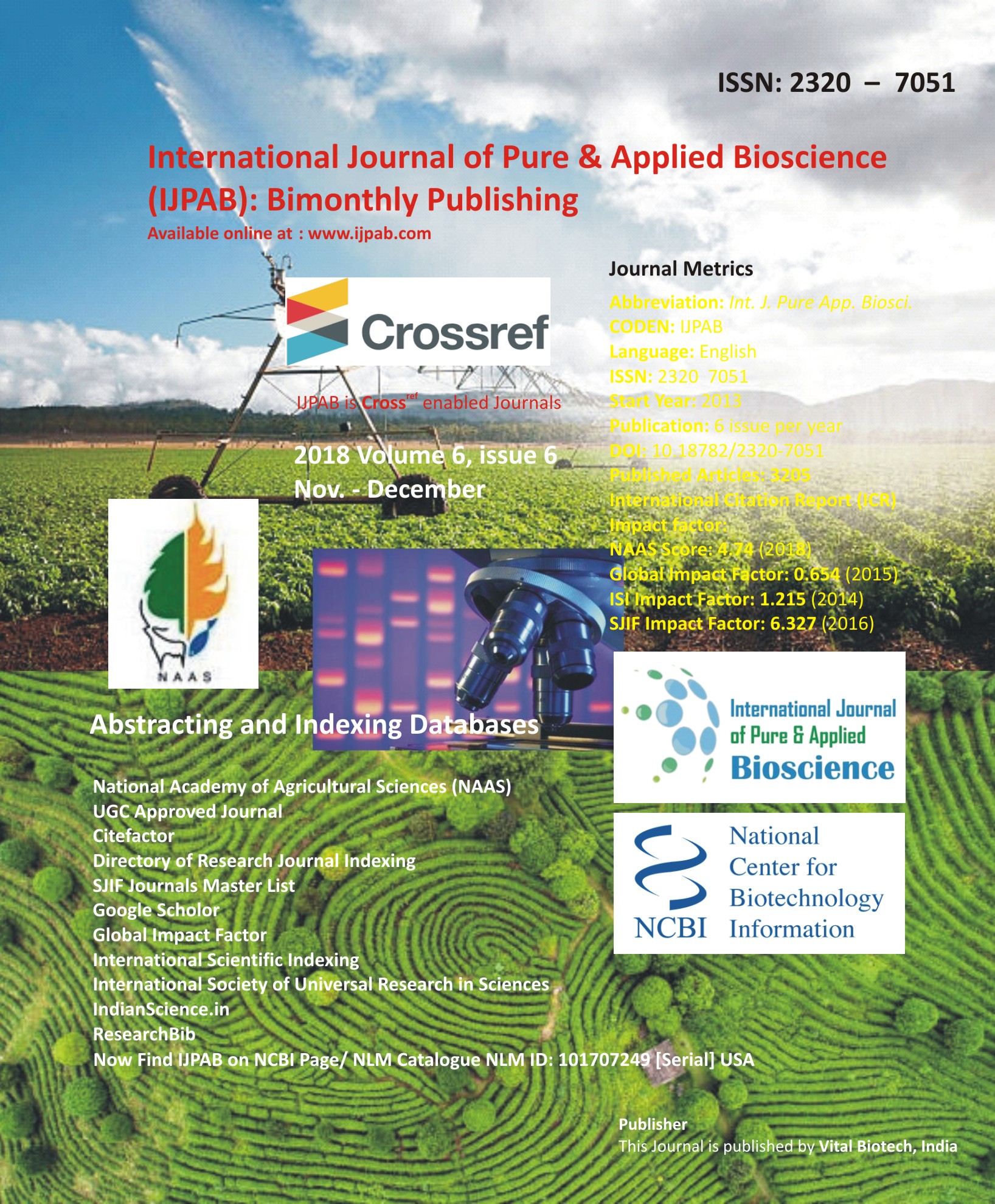
-
No. 772, Basant Vihar, Kota
Rajasthan-324009 India
-
Call Us On
+91 9784677044
-
Mail Us @
editor@ijpab.com
International Journal of Pure & Applied Bioscience (IJPAB)
Year : 2018, Volume : 6, Issue : 6
First page : (772) Last page : (781)
Article doi: : http://dx.doi.org/10.18782/2320-7051.7192
Molecular Characterization of Rice (Oryza sativa L.) Genotypes Using Trait Specific Markers for Grain Zinc Content
M. S. Umar Farooq1*, J. R. Diwan1, K. Mahantashivayogayya2, Vikas V. Kulkarni3 and
N. M. Shakuntala4
1Department of Genetics and Plant Breeding, 3MARS, Department of Genetics and Plant Breeding,
4Department of Seed Science and Technology,
University of Agricultural Sciences, Raichur-584104, Karnataka, India
2AICRP on Rice Breeding, ARS, Gangavathi-583227, Karnataka, India
*Corresponding Author E-mail: umar.gpb@gmail.com
Received: 5.11.2018 | Revised: 3.12.2018 | Accepted: 10.12.2018
ABSTRACT
Micronutrient malnutrition is a serious health problem worldwide, affecting more than three billion people. To address this problem, a genetic approach called biofortification which aims at enrichment of food grains with micronutrients has been evolved and used. Selection of genotypes for higher grain zinc content using marker assisted selection in rice is an effective strategy to address widespread dietary deficiency in human populations. In the present study fifty rice genotypes were subjected to molecular characterization using 7 SSR marker and 3 candadidate gene markers for grain zinc content. The clear and unambiguous bands obtained were scored and used for analysis. Polymorphism information content (PIC) ranged from 0.331 to 0.375. The genetic similarity matrix generated from the primer combinations was used to perform cluster analysis using the UPGMA clustering method where in the genotypes grouped under different clusters indicated the presence of diversity at molecular level as the genotypes showed similar banding pattern for various primers used. The single marker analysis was carried out to find the association between marker and the trait. Out of the seven polymorphic markers obtained, the markers viz., OsZIP3b, OsZIP4b and RM 23 exhibited P- value of 0.049, 0.046 and 0.038 respectively and corresponding R2 (phenotypic variance) value of 6.2, 3.3 and 3.6 respectively indicating there is association between these markers and grain zinc content. Therefore, these markers can be used as a tool for identifying and mapping of new high zinc content genes in rice and also in biofortification program to improve grain zinc content.
Key words: Zinc, SSR markers, Candidate gene markers, Biofortification, Single marker analysis
Full Text : PDF; Journal doi : http://dx.doi.org/10.18782
Cite this article: Umar Farooq, M. S., Diwan, J. R., Mahantashivayogayya, K., Kulkarni, V.V. and Shakuntala, N.M., Molecular Characterization of Rice (Oryza sativa L.) Genotypes Using Trait Specific Markers for Grain Zinc Content, Int. J. Pure App. Biosci.6(6): 772-781 (2018). doi: http://dx.doi.org/10.18782/2320-7051.7192

